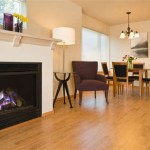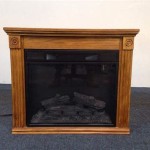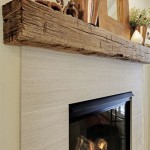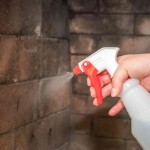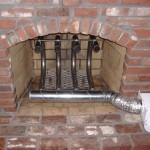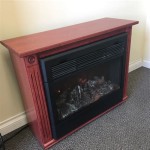Understanding Fireplace Damper Control
A fireplace damper is a crucial component of any wood-burning fireplace system. It acts as a gate, controlling the airflow into and out of the chimney. Proper damper control is essential for fireplace efficiency, safety, and energy conservation. This article will explore the various aspects of fireplace damper control, including types, operation, common issues, and maintenance.
The primary function of a fireplace damper is to seal off the chimney flue when the fireplace is not in use. This prevents drafts from entering the home, reducing heat loss during the winter and preventing cool air conditioned air from escaping during the summer. An open damper allows heated or cooled air to escape, leading to higher energy bills. Furthermore, a closed damper can prevent rain, snow, leaves, and small animals from entering the chimney and potentially the home.
Types of Fireplace Dampers
Several types of fireplace dampers are available, each with its own advantages and disadvantages. Understanding these differences is important when selecting a damper for a new fireplace or replacing an existing one.
Throat Dampers: Throat dampers are the most common type of damper and are located directly above the firebox, within the fireplace throat. They typically consist of a metal plate that pivots or slides to open and close the flue. Throat dampers are often made of cast iron or steel and are relatively inexpensive to install. However, they can be prone to rust and warping due to exposure to heat and moisture. Furthermore, throat dampers often do not provide a completely airtight seal, which can lead to energy loss.
Top-Sealing Dampers: Top-sealing dampers, also known as chimney top dampers, are installed at the top of the chimney, providing a more airtight seal than throat dampers. They typically consist of a metal or rubber gasket that seals against the chimney flue. Top-sealing dampers are more effective at preventing drafts and can also prevent rain, snow, and animals from entering the chimney. They are generally more expensive than throat dampers but can offer significant energy savings over time. The operation is typically controlled by a cable that runs down the chimney to a handle located near the fireplace.
Cast Iron Dampers: These are durable and often found in older homes. They utilize a hinged metal plate within the firebox to control airflow. While robust, they can be susceptible to rust and may not provide as tight a seal as newer designs.
Energy-Efficient Dampers: These newer dampers are designed with improved sealing mechanisms and materials to minimise air leakage. They are available in both throat and top-sealing configurations and are ideal for minimizing energy loss when the fireplace is not in use.
Operating a Fireplace Damper
Knowing how to properly operate a fireplace damper is crucial for both safety and efficiency. Operating instructions depend on the damper type.
Opening the Damper: Before starting a fire, the damper must be fully opened to allow smoke and combustion gases to escape safely through the chimney. Attempting to start a fire with a closed damper can lead to dangerous buildup of carbon monoxide inside the home. For throat dampers, the lever or handle should be moved to the open position. For top-sealing dampers, the cable handle should be pulled or turned to release the seal and open the damper.
Closing the Damper: Once the fire has completely burned out and the embers are cold, the damper should be closed to prevent drafts and energy loss. Closing the damper too soon can trap carbon monoxide inside the home. Ensure the fire is completely extinguished and the ashes are cool before closing the damper. For throat dampers, the lever or handle should be moved to the closed position. For top-sealing dampers, the cable handle should be pulled or turned to engage the seal and close the damper.
Checking Damper Operation: Regularly check the damper to ensure it is operating smoothly and sealing properly. Look for signs of rust, warping, or damage. If the damper is difficult to open or close, it may need to be lubricated or repaired. A flashlight can be used to inspect the damper plate and chimney flue for obstructions or damage. A functioning damper should move freely and create a tight seal when closed.
Safety Considerations: Always ensure the damper is fully open before starting a fire and remains open until the fire is completely extinguished. Never leave a fire unattended with the damper partially closed. Install a carbon monoxide detector in the home to alert occupants to the presence of this dangerous gas. Regular inspection and maintenance of the fireplace and chimney system are essential for safe operation.
Throat Damper Specifics: Inspect the damper plate for rust and ensure it moves freely within its frame. Lubricate the hinge points with a heat-resistant lubricant if necessary. Ensure the handle or lever is securely attached and functions properly.
Top-Sealing Damper Specifics: Check the cable for fraying or damage. Ensure the cable moves smoothly within its housing. Inspect the gasket for cracks or wear. The sealing mechanism should engage and disengage easily without excessive force.
Common Fireplace Damper Problems and Solutions
Several problems can arise with fireplace dampers, affecting their functionality and efficiency. Addressing these issues promptly is important to maintain a safe and efficient fireplace system.
Rust and Corrosion: Rust and corrosion are common problems with throat dampers, especially in humid environments. Rust can prevent the damper from opening and closing properly. To address this issue, the damper can be cleaned with a wire brush and treated with a rust-inhibiting paint. Severely corroded dampers may need to be replaced.
Warping: Exposure to high heat can cause the damper plate to warp, preventing it from sealing properly. A warped damper may need to be straightened or replaced. In some cases, a fireplace professional can attempt to reshape the damper plate, but replacement is often the more reliable solution.
Sticking or Difficulty Opening/Closing: This can be caused by rust, debris, or a misaligned damper plate. Lubricating the damper mechanism with a heat-resistant lubricant can often resolve this issue. If lubrication does not help, inspect the damper for obstructions or damage.
Drafts: Drafts can indicate that the damper is not sealing properly. This can be due to a warped damper plate, a damaged gasket (in the case of top-sealing dampers), or debris preventing a tight seal. Inspect the damper and chimney flue for obstructions and make any necessary repairs. Consider replacing a throat damper with a top-sealing damper for a more airtight seal.
Broken Handle or Cable: A broken handle or cable can prevent the damper from being operated properly. Replace the broken handle or cable with a new one. Ensure the replacement part is compatible with the damper type.
Animal Nests and Debris: Birds, squirrels, and other animals can build nests inside the chimney, obstructing the flue and preventing the damper from sealing properly. Hire a professional chimney sweep to remove the nest and clean the chimney. Install a chimney cap to prevent animals from entering the chimney in the future.
Creosote Buildup: Creosote, a flammable byproduct of wood combustion, can build up inside the chimney and on the damper. This can prevent the damper from sealing properly and increase the risk of a chimney fire. Regular chimney sweeps are essential to remove creosote buildup.
Addressing Specific Challenges: For throat dampers, ensure there are no brick fragments or mortar obstructing the mechanism. For top-sealing dampers, inspect the area where the damper meets the chimney for any debris that could prevent a proper seal. Consider using a chimney cleaning log periodically to help reduce creosote buildup.
Professional Assistance: When in doubt, consult a qualified chimney sweep or fireplace professional. They can diagnose the problem accurately and recommend the appropriate solution. Attempting to repair a damaged damper without the proper knowledge or experience can be dangerous.
Ignoring problems with the damper can have serious consequences. A malfunctioning damper can lead to energy loss, increased fire risk, and potential carbon monoxide poisoning. Addressing these issues promptly is crucial for maintaining a safe and efficient fireplace system.
A chimney cap prevents animals, rain, and debris from entering the chimney. This is a safety component to prevent a chimney fire.
It is not recommended to seal off the fireplace completely to prevent cold air from entering. If the fireplace is not in use, it is important to keep the fireplace clean from debris.

What Is A Chimney Damper Full Service

How To Open A Chimney Damper Traditional Fireplace Pros

How To Use A Fireplace Damper The Right Way

Fireplace Dampers Cast Iron Marshall Stamping

How Do Fireplace Dampers Work Zoro Com

Fireplace Damper Repair Full Service Chimney Kansas City

When Should You Close The Damper On A Fireplace Tips

Is My Fireplace Damper Open Or Closed Vertical Chimney Care

Top Mount Vs Throat Dampers Fireplace Damper Portland Oregon

What Is A Fireplace Damper How To Adjust
Related Posts

